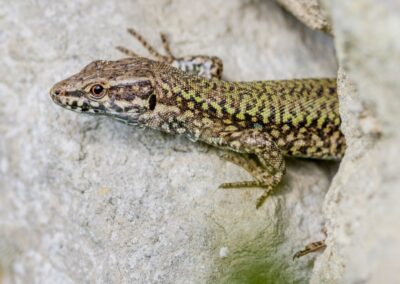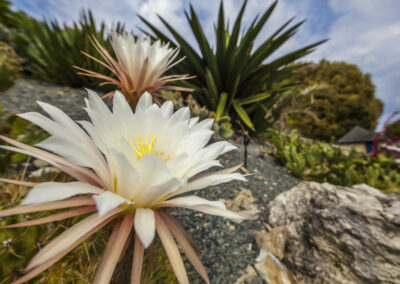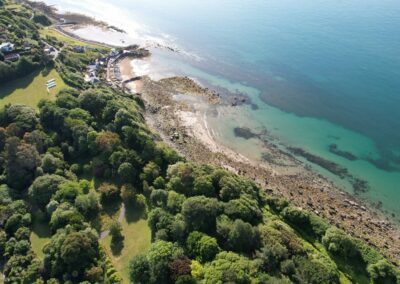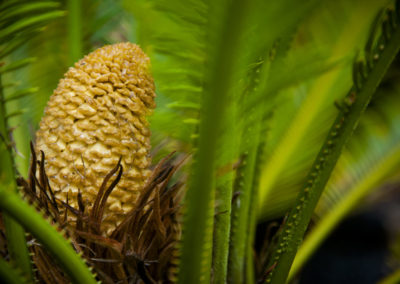Britain’s Hottest Garden – Ventnor Botanic Garden

what makes Ventnor Botanic Garden, Britain’s Hottest Garden?
Ventnor Botanic Garden – 22 acres of stunning gardens located within the unique micro-climate of the Ventnor Undercliff on the Isle of Wight. This unique location is overlooked by tall cliffs to the North and the English Channel to the South, which provides a mild climate with only 28 inches of average rainfall. Its climate is more akin to the Mediterranean than the rest of the UK, allowing Ventnor Botanic Garden to be an average 5°C higher temperature all-year-round. This geographical gift offers a wide variety of plants considered too tender for much of mainland Britain to be grown outdoors.
Many of our plants are shown in representations of geographical regions, growing in association with each other as they would in the wild. We aim to present an immersive experience where the visitor is transported to landscapes from around the world. There’s an impressive collection of succulents and cacti, including huge spiky agaves and flowering aloes. Sun-loving herbs, giant echiums, vibrant bedding plants and mature palm trees thrive here, as do many colourful South African treasures, Australian eucalyptus, bottlebrushes, tree ferns, and much more.
Discover The Ventnor Method – Our very own take on botanic gardening in this unique micro-climate and ecosystem.
The history of Ventnor Botanic Garden starts and stops with its microclimate. We are 5°C hotter than the rest of the Isle of Wight and the UK mainland; hence ‘Britain’s Hottest Garden’. As such, we are a bellwether for climate change, for what is likely to grow and not grow in UK gardens in the future. From the Canna Lilies we no longer lift in winter to the plants that we alone can grow outdoors in the UK, we take pushing the boundaries of half hardiness seriously.
We rarely get a frost and if we do the Garden heats quickly when the sun returns due to the temperature buffer of the English Channel, the south-facing aspect of the Undercliff, and the shelter from north winds which pass overhead.




